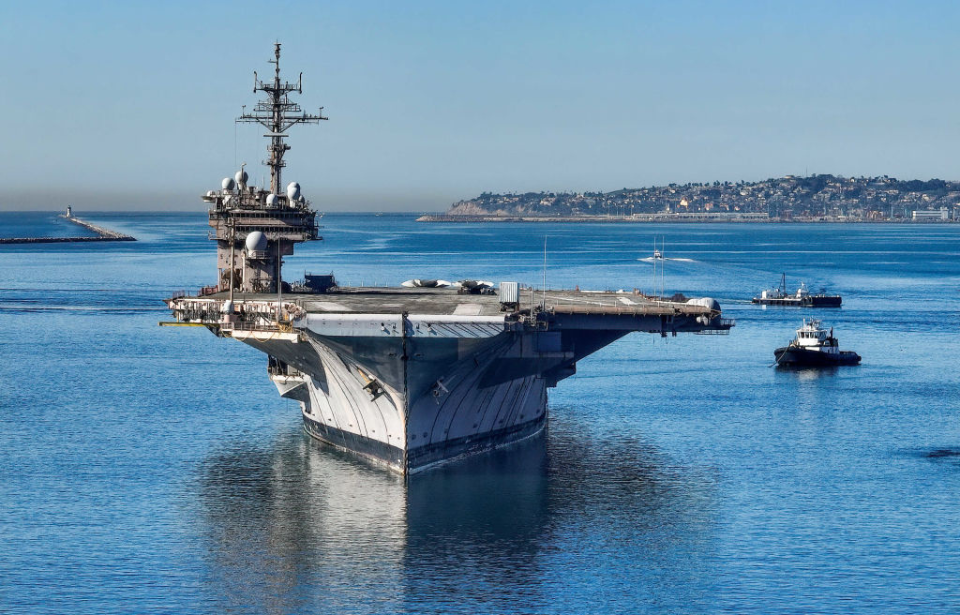In May 2022, the decommissioned supercarrier USS Kitty Hawk (CV-63) arrived in Brownsville, Texas, to commence the dismantling process. This iconic vessel served the US Navy with distinction for nearly five decades, having been commissioned in 1961 at a construction cost of $264 million (equivalent to approximately $2.5 billion today).
In 2021, the Kitty Hawk was sold to a scrap company for a mere one cent. Although discussions continue about the financial worth of this historic ship, her nearly fifty years of service undoubtedly cement her legacy.
Captivating military personnel and civilians alike
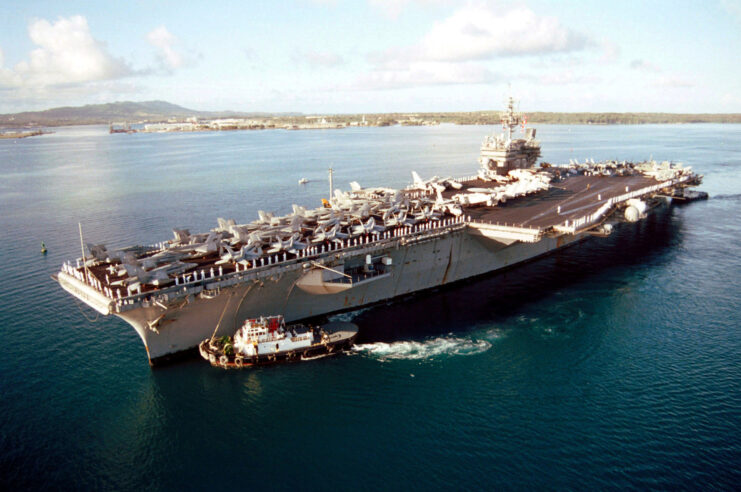
The USS Kitty Hawk, the lead vessel of the Kitty Hawk-class aircraft carriers, was constructed by the New York Ship Building Corporation, with work starting in December 1956. It was launched in May 1960 and officially entered service the following year. Shortly after commissioning, the ship set out on its initial voyages, including trips to South America and cruises near the coast of Japan.
Service during the Vietnam War
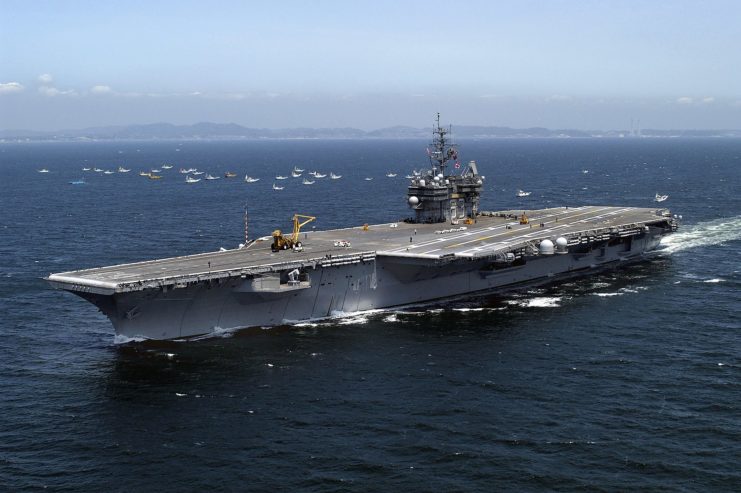
During the Vietnam War, the USS Kitty Hawk served in Southeast Asia and later underwent upgrades to improve her versatility as a multi-role carrier. In the 1970s, she operated in the Western Pacific, participating in humanitarian missions such as rescuing Vietnamese refugees and providing assistance after the assassination of Korean President Park Chung-hee. The Kitty Hawk was also sent to the Arabian Sea during the Iran Hostage Crisis.
Throughout the rest of her service, the ship remained active in both the Middle East and the Pacific.
Weapons equipped by the USS Kitty Hawk (CV-63)
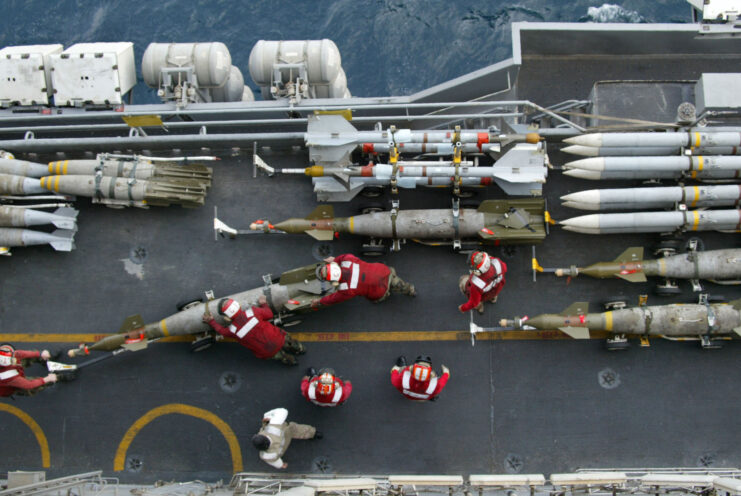
Equipped with a formidable arsenal that included RIM-7 Sparrow surface-to-air missiles (SAMs), two RIM-116 Rolling Airframe Missiles (RAMs), and two Phalanx Close-In Weapon Systems (CIWS), the USS Kitty Hawk stood as a marvel in the US Navy’s fleet. She carried between 70 and 85 aircraft, featuring Boeing F/A-18E/F Super Hornets, Northrop Grumman EA-6B Prowlers, E-2C Hawkeyes, Sikorsky SH-60F and HH-60H Sea Hawk helicopters, and a Grumman C-2A Greyhound.
In addition to her military prominence, Kitty Hawk hosted a range of celebrities, including US President John F. Kennedy, Nancy Sinatra and author John Steinbeck. She even made her way into Hollywood, with Disney using her for the filming of the 1966 movie Lt. Robin Crusoe, U.S.N.
In a historic achievement, Kitty Hawk, in December 1967, became the first carrier to receive the Presidential Unit Citation, honoring her outstanding service during the Vietnam War, especially her role in the Tet Offensive.
Sold down the river
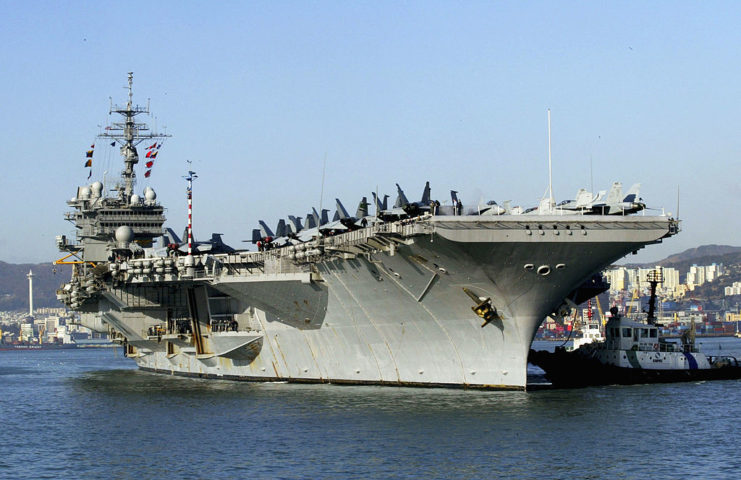
In 2005, the Navy announced that the nuclear-powered aircraft carrier USS George Washington (CVN-73) would replace the USS Kitty Hawk at United States Fleet Activities Yokosuka in Japan.
Decommissioning started in 2008, and the ship was officially retired in 2019 in Bremerton, Washington. On the day of its retirement, more than 2,000 people gathered in Kitty Hawk’s hangar bay for a ceremony honoring the legacy of the Navy’s oldest active warship.
Veterans tried to save her
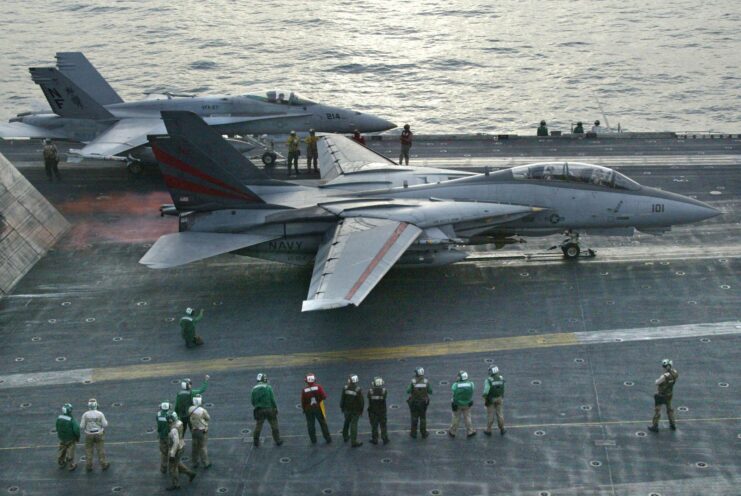
While her fate was still undecided, the USS Kitty Hawk Veterans Association raised $5 million to preserve the carrier as a museum. Unfortunately, the Navy decided against the plan, in favor of scrapping the ship. In October 2021, the service sold the USS Kitty Hawk and another carrier, the USS John F. Kennedy (CV-67), to International Shipbreaking Limited for one cent each.
Are you a fan of all things ships and submarines? If so, subscribe to our Daily Warships newsletter!
In May 2022, Kitty Hawk reached her final destination in Texas to begin the scrapping process, which is expected to take between five and 10 years, at a cost of around $750 million.
